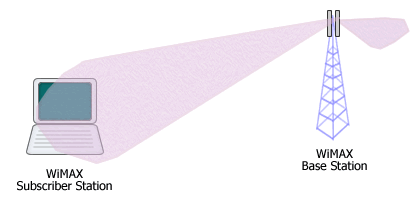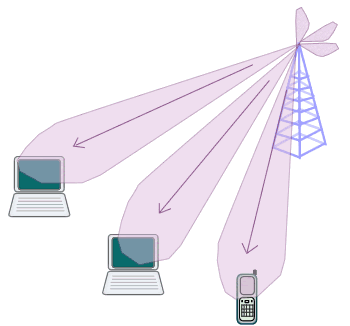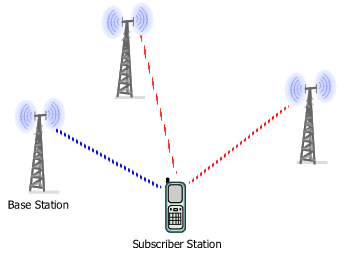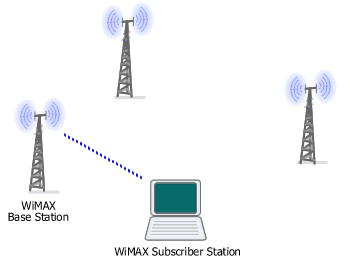Try this one:I f previous link not work,
3GPP LTE and LTE Advanced-->
downloads.hindawi.com/ journals/specialissues/ 0002009007.pdf
RF Optimization Tutorial and Information for 2G,3G,4G and 5G
Whatever the name – next generation LTE, LTE-Advanced or LTE Rel-10 – the next step in LTE evolution allows operators to introduce new technologies without putting exis
Multiple input multiple output (MIMO) technologies introduced in LTE such as spatial multiplexing, transmit diversity, and beamforming are key components for providing higher peak rate at a better
Tutorial Outline
A comprehensive online LTE tutorial from Artiza Networks. It includes LTE overview, LTE eNB details & LTE eNB Evaluation Methodology. Contents include followings
Rohde & Schwarz - Multiple antenna systems, known as MIMO systems, form an essential part of today’s wireless communications standards.
Rohde & Schwarz - This application note explains the fundamentals of the cell search and cell selection and reselection procedures required for both modes of UMTS Long Term Evolution: FDD and T
Telesystem Innovations - This article presents an overview of the LTE physical layer with a focus on essential aspects of the physical layer for FDD mode, which is the dominant mode of operation.
Telesystem Innovations - This article presents an overview of the LTE physical layer with a focus on essential aspects of the physical layer for FDD mode, which is the dominant mode of operat
This Application Note describes LTE- Advanced signal generation with spectrum aggregation in numerous configurations using one or more Vector Signal Generators R&S SMU200A or R&S SMBV100A.
Although the commercialization of LTE technology began in end 2009, the technology is still being enhanced in order to meet ITU-Advanced requirements.
more on: http://lteworld.org/ tutorial
An Adaptive Antenna System (AAS) can focus its transmit energy to the direction of a receiver. While receiving, it can focus to the direction of the transmitting device. The technique used in AAS is known as beamforming or beamsteering or beamshaping. It works by adjusting the width and the angle of the antenna radiation pattern (a.k.a. the beam).

Figure. WiMAX BS with AAS beamforming capability
The main lobe is directed toward a subscriber station (SS).
Combined with multiple antennas in the Base Station (BS), AAS can be used to serve multiple Subscriber Stations (SSs) with higher throughput. A technique known as SDMA (Space Division Multiple Access) is employed here where multiple SSs that are separated (in space) can transmit and receive at the same time over the same sub-channel.

Figure. WiMAX BS with multiple antennas and AAS
AAS and multiple antennas combined in the BS can increase per user data rate.
AAS also eliminates interference to and from other SSs and other sources by steering the nulls to the direction of interferers. AAS is an optional feature in WiMAX and not included in WiMAX certification. But due to its effectiveness in improving performance and coverage especially in Mobile WiMAX case, many vendors integrate AAS capability into their products.
For implementing a mobile network, a handoff mechanism must be defined to maintain uninterrupted user communication session during his/her movement from one location to another. Handoff mechanism handles subscriber station (SS) switching from one Base Station (BS) to another. Different handoff techniques have been developed. In general, they can be divided into soft handoff and hard handoff.

Figure. Soft Handoff
A SS maintains multiple connections. Delay is very minimal
Soft handoff is used in voice-centric cellular networks such as GSM or CDMA. It uses a make-before-break approach whereas a connection to the next BS is established before a SS leaves an ongoing connection to a BS. This technique is suitable to handle voice and other latency-sensitive services such as Internet multiplayer game and video conference. When used for delivering data traffic (such as web browsing and e-mail), soft handoff will result in lower spectral efficiency because this type of traffic is bursty and does not require continues handover from one BS to another.

Figure. Hard Handoff
A SS maintains a connection to a single BS at any given time.
Mobile WiMAX has been designed from the outset as a broadband technology capable of delivering triple play services (voice, data, video). However, a typical Mobile WiMAX network is supposedly dominated by delay-tolerant data traffic. Voice in Mobile WiMAX is packetized (what is called VoIP) and treated as other types of IP packets except it is prioritized. Hard handoff (HHO) is therefore used in Mobile WiMAX. In hard handoff, a connection with a BS is ended first before a SS switches to another BS. This is known as a break-before-make approach. Hard handoff is more bandwidth-efficient than soft handoff, but it causes longer delay. A network-optimized hard handoff mechanism was developed for Mobile WiMAX to keep a handoff delay under 50 ms.